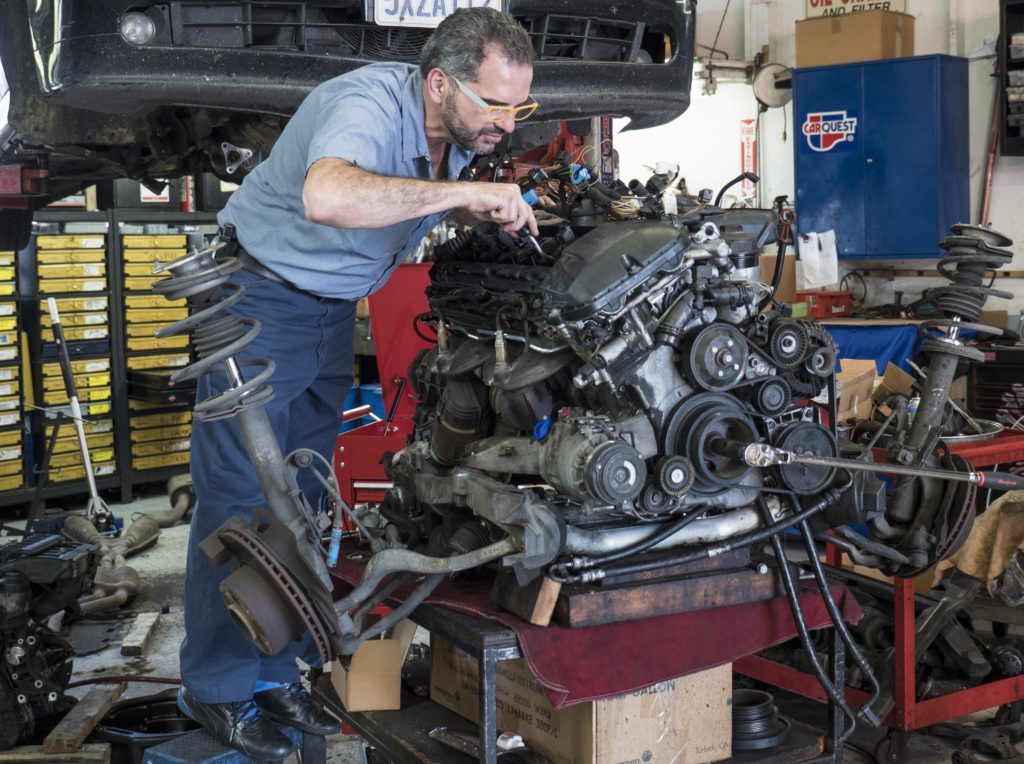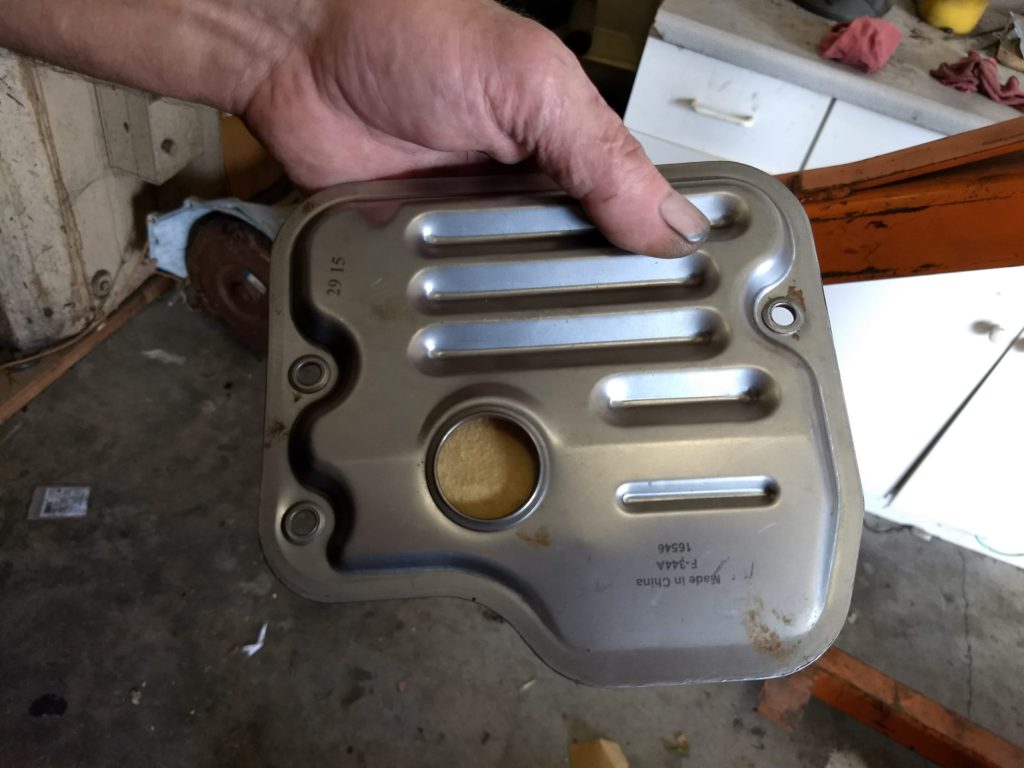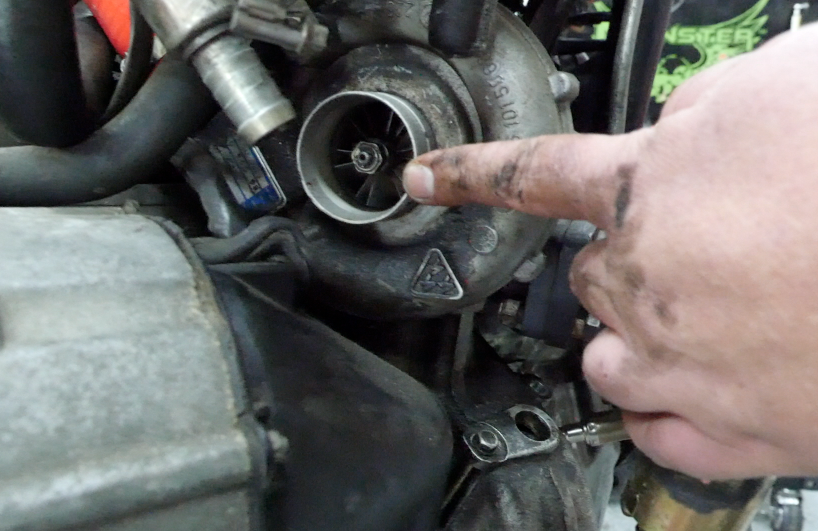
Oil changes are important, but it’s also necessary to address lesser-known aspects of vehicle maintenance. Photo: Fremont Foreign Auto ©2019
As a vehicle owner, you’re likely familiar with routine maintenance tasks like oil changes and tire rotation. However, there are many lesser-known aspects of vehicle maintenance you may not be aware of. To expand your knowledge, we asked five Diamond Certified Expert Contributors to address some often-overlooked vehicle components and their maintenance needs.
Water pump
A vehicle’s water pump continually delivers coolant to the engine and radiator to prevent overheating. Not surprisingly, when this crucial component fails, the consequences can be dire. According to Gurjit Singh, owner of Reliant Auto Repair in San Jose, while water pump failure isn’t always preventable, proactive maintenance can reduce the chances. This chiefly consists of having your engine’s coolant flushed at manufacturer-recommended intervals.
Additionally, Mr. Singh recommends replacing your water pump preventatively rather than waiting for it to fail. “A good milestone for water pump replacement is when you replace your timing belt—usually at the 90,000-mile mark,” he explains. “Since the timing belt is already being replaced, it won’t cost much more to replace the water pump as well, and it’ll extend the long-term integrity of your engine’s cooling system.”
Fuel pump
Another component most vehicle owners aren’t familiar with is the fuel pump, which is responsible for pushing fuel to the engine. According to Mike Schwarzbart, owner of Berkeley Motor Works, few people realize fuel pumps are lubricated and cooled by fuel in the tank. For this reason, if you habitually run your vehicle at low fuel levels, you may be contributing to premature wear of its fuel pump, which can lead to costly repairs. Luckily, you can avoid this by adopting a simple habit: Keep at least a quarter-tank of gas in your car at all times. This will ensure the fuel pump stays lubricated and help extend your car’s lifespan.

Unlike a simple transmission flush, a full transmission service includes replacement of the filter. Photo: American Ratings Corporation ©2019
Transmission
Many vehicle owners are diligent about changing their oil but forget about their transmission fluid, which lubricates the transmission’s many moving parts. To keep your vehicle’s transmission running optimally for the long term, Eduardo Porta, owner of Fremont Foreign Auto, suggests having it serviced routinely—ideally every 30,000 miles. A proper transmission service consists of draining and refilling the transmission fluid, replacing the filter, and installing a new gasket.
While regular service will extend the lifespan of your transmission, Mr. Porta cautions against having it flushed. “Few people realize that flushing a transmission can actually cause problems, especially with a vehicle that has more than 80,000 miles,” he explains. “Since flushing forcefully removes any trace of the old fluid, when the new fluid is introduced, it cleans the valve body so well that the worn-out parts inside can start to leak and lose pressure. In contrast, when you skip the flush and simply drain the fluid, some residue from the old fluid remains, which makes it less of a shock when the new fluid is introduced.”
Shocks
Not only are shocks commonly overlooked in terms of maintenance, few people understand the true extent of their purpose. “Most people think shocks are primarily there to make driving more comfortable, but in reality, they have a far more versatile function,” explains Walee Gon, president of Faxon Garage in San Francisco. “For example, shocks’ role in controlling vehicle body movement also translates to safety and stability while driving, which is why worn-out shocks are actually a safety concern. Also, when shocks no longer function properly, it often results in premature wear of other vehicle components and ultimately leads to expensive repair bills.” Because of the crucial role they play in vehicle operation, Mr. Gon recommends having your shocks inspected on a recurrent basis.

With the smaller size of today’s vehicle engines, turbochargers provide a great way to maximize power and fuel efficiency. Photo: American Ratings Corporation ©2019
Turbocharged engines
In recent years, more and more vehicle manufacturers are incorporating turbocharger technology into their engine designs. A turbocharger utilizes exhaust gas to pressurize the air inside the engine, which enables the engine to take in more fuel. With the smaller size of today’s vehicle engines, turbochargers provide a great way to maximize power and fuel efficiency.
Bo Posey, president of Metric Motors in Sonoma, points out that with this increased power and efficiency comes an increased need for maintenance. “Since turbochargers spin at up to 200,000 RPMs, if they don’t have enough oil for lubrication, they’ll fail quickly, which will result in costly repairs. That’s why owners of turbocharged vehicles need to be extra diligent about keeping up with factory-recommended maintenance and oil changes.”
Mr. Posey also offers some suggestions for driving a turbocharged vehicle. “Don’t be hard on the throttle,” he cautions. “Press the throttle evenly and resist the urge to speed up too quickly. Also, keep speed and gear in balance—don’t travel too slowly in a high gear or you could strain the engine. Finally, following long drives, allow the engine to idle for a few minutes before turning it off. This will give the oil time to cool down and help prevent sludging, clogging, and insufficient lubrication.”
